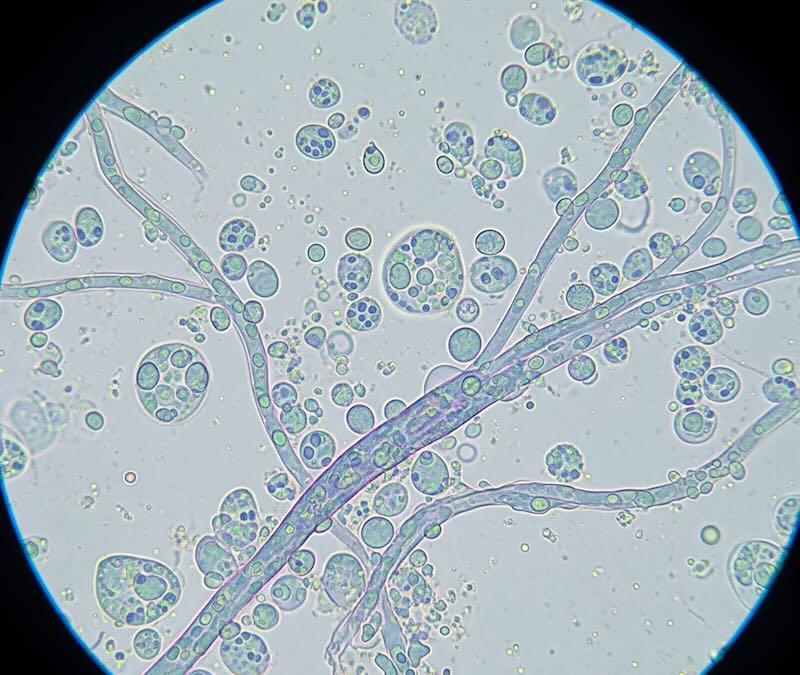Understanding and Treating Candida Balanitis: A Guide from Derma Clinic
Dealing with discomfort and irritation in your most private areas can be both distressing and embarrassing. One common but often misunderstood condition affecting men is Candida Balanitis. It’s an inflammation of the glans (the head of the penis) caused by an overgrowth of a yeast-like fungus called Candida albicans. While it can be alarming, the good news is that it’s highly treatable with the right medical care including oral, topical when required surgical treatment like circumcision.
At Derma Clinic Kathmandu, we believe in empowering our patients with knowledge. This article will shed light on Candida Balanitis, helping you understand its signs, causes, and the effective treatments we provide.
What Do the Lesions Look Like?
Recognizing the signs of Candida Balanitis is the first step toward seeking help. The infection typically presents with a distinct set of symptoms on the head of the penis and, in uncircumcised men, the foreskin.
Key signs and lesions include:
- Redness and Inflammation: The most common sign is a blotchy, bright red rash covering the glans.
- Itching and Burning: A persistent and often intense itching or burning sensation is a hallmark of the condition. This can be particularly uncomfortable during urination.
- Clumpy White Discharge: A thick, white, lumpy discharge, often described as looking like cottage cheese, may be present under the foreskin or in the skin folds.
- Shiny, Moist Skin: The surface of the glans may appear unusually shiny and moist.
- Unpleasant Odor: A sour or yeasty smell is often associated with the infection.
- Pain and Discomfort: The area can become sore and tender to the touch, and intercourse can be painful.
- Phimosis: In some cases, the foreskin can become tight and difficult to retract.
How Common Is It and Why Does It Happen?
Candida Balanitis is surprisingly common. The Candida fungus naturally lives on our skin and in our bodies in small, harmless amounts. The problem arises when conditions allow it to multiply uncontrollably.
The primary reasons for this overgrowth include:
- Poor Hygiene: In uncircumcised men, failure to regularly wash beneath the foreskin creates a warm, moist environment where yeast can thrive.
- Chemical Irritants: Using harsh soaps, shower gels, or even scented lubricants can disrupt the natural balance of microorganisms on the skin, triggering an overgrowth.
- Underlying Health Conditions: Certain health issues create a systemic environment conducive to yeast infections.
- Sexual Transmission: While not strictly a sexually transmitted infection (STI), Candida can be passed between partners during sexual activity. If your partner has a vaginal yeast infection, it can be transmitted to you.
Who Are the Targeted People?
While any man can develop Candida Balanitis, certain groups are at a significantly higher risk:
- Men with Uncontrolled Diabetes: High blood sugar levels are a key risk factor. The excess sugar excreted in urine provides a rich food source for yeast, promoting its growth.
- Uncircumcised Men: The area under the foreskin (the prepuce) is a natural breeding ground for fungi if not kept clean and dry.
- Individuals with a Weakened Immune System: People who are immunocompromised due to conditions like HIV, undergoing chemotherapy, or taking long-term steroid medications are more susceptible to all types of fungal infections.
- Prolonged Antibiotic Use: Broad-spectrum antibiotics can kill off the “good” bacteria that normally keep the Candida population in check, allowing the yeast to overgrow.
How to Get Rid of It: Effective Treatment is Key
Getting rid of Candida Balanitis involves a two-pronged approach: addressing the immediate infection and managing the underlying cause to prevent recurrence.
- Medical Treatment: The cornerstone of treatment is antifungal medication. A dermatologist will typically prescribe a topical antifungal cream or ointment to be applied directly to the affected area. In more severe or persistent cases, an oral antifungal medication might be necessary. It is crucial to complete the full course of treatment, even if symptoms improve quickly, to ensure the infection is completely cleared.
- Proper Hygiene:
- Gently wash the penis daily with warm water and a mild, non-soap cleanser.
- If you are uncircumcised, carefully retract the foreskin and clean the area underneath, then dry it thoroughly before replacing the foreskin.
- Avoid using harsh soaps, deodorants, or perfumed products on your genital area.
- Wear loose-fitting cotton underwear to keep the area cool and dry.
- Managing Underlying Causes: If an underlying condition like diabetes is the cause, managing it effectively is essential for preventing future episodes.
- Surgical Treatment: Circumcision is sometimes advised for a patient with recurrent candida balanitis.
Treatment at Derma Clinic Kathmandu
Struggling with Candida Balanitis can be a frustrating experience, but you don’t have to go through it alone. Over-the-counter creams may not be strong enough or appropriate for your specific situation, and self-diagnosis can be risky. A proper diagnosis from a qualified dermatologist is vital to rule out other conditions and ensure you receive the most effective treatment.
Derma Clinic provides expert, confidential diagnosis and treatment for Candida Balanitis. Our experienced dermatologists understand the sensitive nature of this condition and are dedicated to providing compassionate and effective care. We will develop a personalized treatment plan to clear your infection and provide you with the guidance you need to prevent it from coming back.
Don’t let discomfort and embarrassment hold you back. Take control of your health today.
Contact Derma Clinic to schedule your confidential consultation.
- Visit us at : Derma Clinic, Basundhara Chowki, Kathamdu
- Call us or Whatsapp us : 9801358600
Our team at Derma Clinic is here to help you achieve clear, healthy skin and restore your comfort and confidence.


